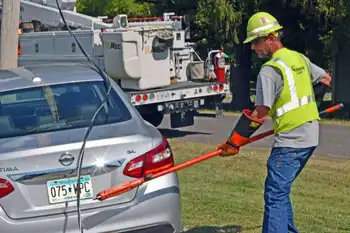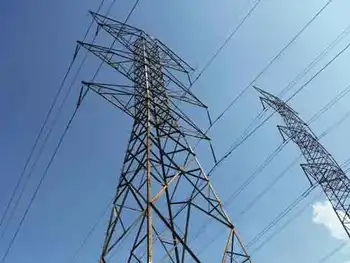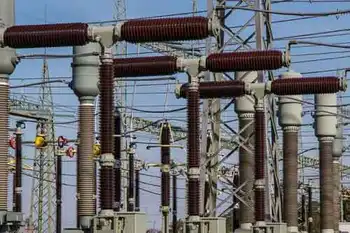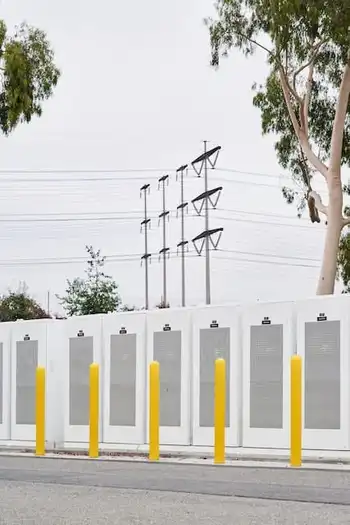Hawaii revving up to era of EVs
By Honolulu Advertiser
NFPA 70e Training
Our customized live online or in‑person group training can be delivered to your staff at your location.

- Live Online
- 6 hours Instructor-led
- Group Training Available
Besides the usual spotlighting of the latest car models and improvements, the show figures to offer a glimpse into types of electric cars that are expected to increasingly dot Hawaii's roadways over the next few years and decades.
HECO has signed on as a sponsor of the First Hawaiian International Auto Show and will be among exhibitors touting the coming age of electrics. There will be an expensive electric roadster, an electrified version of a Mini Cooper, as well as companies that install charging stations.
"It's no longer theory, or some science fiction thing," said David Rolf, executive director of the Hawaii Automobile Dealers Association, which helps sponsor the annual new car event. "The dream becomes reality."
The show may prove to be a demarcation point of sorts as the state applies the brakes to petroleum use and looks to become a renewable energy showplace. It's well known that Hawaii gets about 90 percent of its energy from petroleum, making it the most vulnerable state in the nation for crude oil price spikes.
Gov. Linda Lingle has set in motion a plan to wean Hawaii from oil, setting a goal of getting 70 percent of its energy from clean sources by 2030 — 40 percent in renewable electricity generation and another 30 percent in energy efficiency.
What's not as well known is that electric vehicles play a big role in the plans. There are estimates that as much as two-thirds of petroleum use here goes to transportation, including jet fuel, gasoline and diesel.
One projection done for the state estimated there will be as many as 10,000 electric cars on the roads here in the next five years and 43,000 in a decade. That's out of a census of more than a million vehicles.
The estimates are subject to much debate since electric car prices, the cost of gasoline and electricity as well as available charge stations and the economy all figure into the formula. Battery life, weight and charging capability also enter into the computations.
But the state thinks the trend line for the cars is headed in one direction — up, especially so given longer-term forecasts for higher oil prices.
"It's not a question of will it happen; it's a matter of how quickly it will happen," said Maria Tome, manager of the state's Renewable and Transportation Energy Program within the Department of Business, Economic Development and Tourism.
Just the fuel cost portion of the equation is a compelling argument for electric vehicles, or EVs. Tome notes that the average Hawaii car getting 20 miles per gallon and driven 10,000 miles a year has gasoline costs of $1,750.
An electric vehicle driven the same distance using 6 cents of electricity per mile would cost $625 a year with recharging at 25 cents per kilowatt hour. The electric car owner would save $1,125 a year over the fueling costs for a conventional car with an internal combustion engine.
From a policy perspective, there are a trunk full of other reasons to adopt EVs that move the state toward its energy independence goals.
Many experts think charging of EVs will take place mainly overnight at home — something that helps provide an outlet for energy produced by the wind farms, ocean buoys and ocean thermal energy conversion projects envisioned for the state.
Otherwise the electricity these generate during the low-energy-usage early morning hours might be wasted.
"For us, it's not just the effect of having a more diverse energy mix to keep our transportation sector moving," Tome said. "It also has potential to use renewable energy that otherwise might not be used."
Those are among the selling points for EVs. But putting this into practice will have its challenges.
For starters, there is no major auto manufacturer selling EVs in the state and there won't be for months. Even then, some people might back away from EV purchases, given the sticker shock that they will experience.
There are exotic electrics in Hawaii, with four people owning the pricey Tesla roadsters. There also are the stripped down, neighborhood electrics that look like big city cousins of golf carts.
For now, many of the designs that are edging toward production are smaller cars. Nissan, which may make a marketing announcement during the First Hawaiian show, has a car called the Leaf that's based on its Versa subcompact model.
Chevrolet's heralded Volt is a four-seater that is along the lines of a Chevy Malibu in terms of size, according to John O'Dell, editor of GreenCarAdvisor.com, which tracks developments in alternative fuel vehicles as part of Edmunds.com.
The Volt is a so-called extended-range vehicle that combines a 40-mile battery, or less than what many people drive on a daily basis, with a fail-safe should the battery run out. At that time a gasoline-powered generator kicks in to feed electricity to the motor.
That solves some of the cost and weight problems with the lithium-ion batteries that are being used in most cars. But there may be another problem for buyers: No prices have been released but the car is thought to be in the $40,000 price range.
There is a $7,500 federal tax credit that can be applied, and the state is contemplating enacting a grant and rebate program to soothe some of the EV pricing sting.
"It's not an inexpensive car," said O'Dell, noting that maintenance costs for the EVs are typically much less than for conventional vehicles.
The Leaf is talked about in the high-$20,000 to- low-$30,000 price range, though Nissan hasn't said what the cost will be. Drivers will not only have to change their fueling habits (typically recharging every night), but also how they view car pricing by including fuel costs.
A study released by management consulting firm Accenture earlier this month found that more than half of people polled in the U.S. and Canada said they would not pay more for an EV or hybrid vehicle.
Half said they wanted charging to take only 20 minutes, or much less time than the several hours that most plug-in systems take. Only 5 percent said they were likely to buy an electric car in the next two years, though the percentage went up to seven in 10 when it came to a hybrid.
Still, a recent report done by Deutsche Bank Securities for Wall Street investors came out bullish on EVs.
"We continue to believe that the market underestimates the potential for growth in this segment... particularly in markets that are supported by EV-friendly government policies and independent infrastructure companies focused on growing the penetration of such vehicles," said the report.
It noted battery costs are coming down faster than expected as performance of the batteries increased.
The report was good news for an increasing number of companies vying to install charging stations or infrastructure, a necessary component to the adoption of EVs.
It's believed tens of thousands of such sites will be needed, ranging from charging hardware installed at homes to those available in parking lots at office buildings and shopping malls.
HECO's booth will showcase Coulomb Technologies, GoSmart, AeroVironment and Control Technologies.
It also will feature Better Place, a high-profile Silicon Valley company that promises to set up a system whereby subscribers won't have to worry about the battery cost of their cars.
Better Place will pay for those units if customers agree to a subscription plan akin to buying mobile phone minutes — so much for so many minutes.
For drivers who come close to draining the 100-mile range of the batteries, there will be some battery-swap stations where freshly charged batteries can be loaded into cars.
Better Place spokeswoman Julie Mullins declined to say what these costs might be for its plans or the status of talks with U.S. carmakers for models using its battery system.
The company has been making progress with its model in Denmark and Israel and has been targeting Hawaii as one of the first markets it serves. Mullins said the company intends to start putting in charge sites by the end of this year and have a "mass deployment" of the sites in 2012.
O'Dell said the Better Place model might work for a market like Hawaii, but may not make sense in some Mainland areas where people drive farther. He said it may be that some people buy EVs as a second car to be used by the household member who has a limited commute.
He also expects a number of alternatives to be tried as the EV era progresses.
There will be people that will drive conventional hybrids that don't plug in and other hybrids that have plug-in capability.
There also will be the extended-range cars like the Volt and pure battery EVs. Down the road there also may be hydrogen fuel cells to run cars with electric motors.
"We're going to have 20 to 30 years where every one of these things is on the road," O'Dell said, noting after that the market will probably settle on two or three types of vehicles.
But all of it has to start with drivers getting more comfortable with the concept of EVs.
"One of the beginning challenges to getting electric vehicles on the street is getting customers to understand and want them," said HECO spokesman Peter Rosegg.
"It's not going to happen if we don't start."











